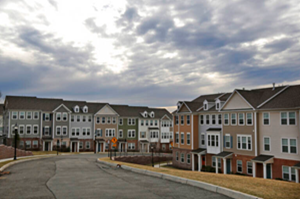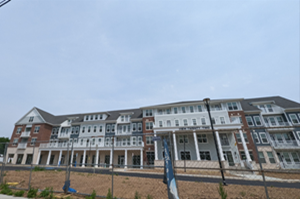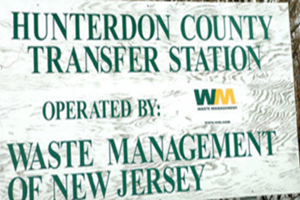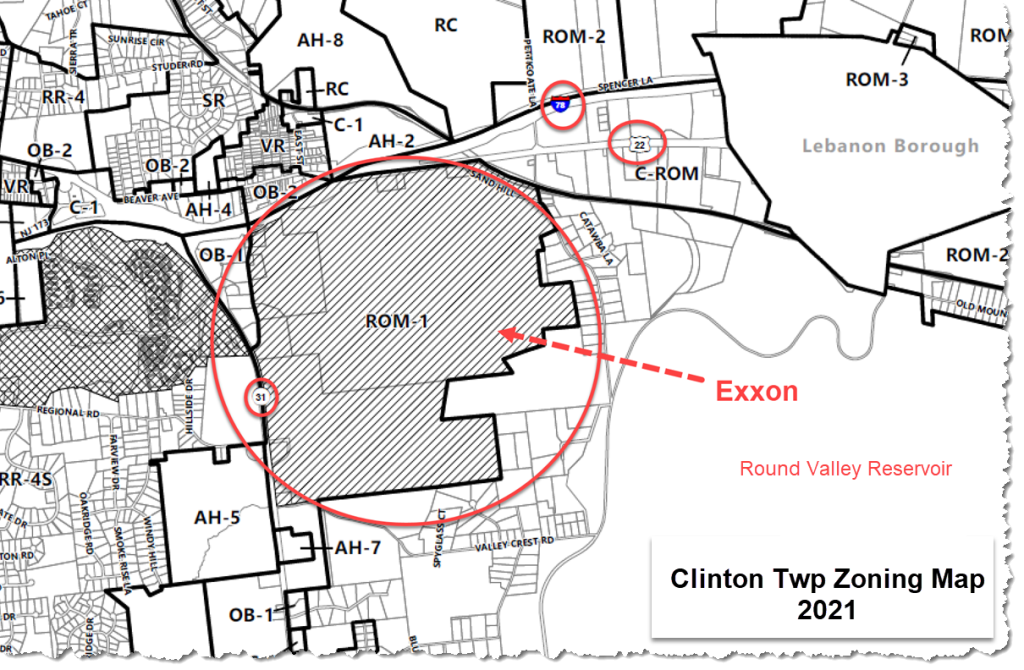You’ve seen them in the middle of farmland, on Main Streets in the state’s quaintest towns, and on the shores and banks of the most beautiful lakes, rivers and streams — all across New Jersey: massive, ugly, poorly conceived ultra-high-density, 3, 4 and 5-story housing developments that just don’t fit.
SCORE: Affordable housing – 1, Sprawl – 4
 These are predominantly high-priced market units — up to 80 percent or more of them — that yield windfall profits for their builders. Most of them are brought to you by courts that call them a “builder’s bonus” because they include a tiny number of court-mandated “affordable housing” units — a 4:1 ratio. Most of these developments pay no normal property taxes.
These are predominantly high-priced market units — up to 80 percent or more of them — that yield windfall profits for their builders. Most of them are brought to you by courts that call them a “builder’s bonus” because they include a tiny number of court-mandated “affordable housing” units — a 4:1 ratio. Most of these developments pay no normal property taxes.
New Jersey needs more affordable housing — but not in this form, or at the indefensible costs they exact on taxpayers, or at the risks they pose to water quality and our natural resources, or with little regard to sound planning.
But you wouldn’t know it to look at the monolithic carbuncles that pass for “housing developments” today in New Jersey. And after all the hubbub, the truth is that the Fair Housing Act is actually being abused to generate more high-priced condos and townhouses than “affordable” units for people that need them, all the while giving short shrift to the limits imposed by how much development the land can support. Affordable Housing – 1. Sprawl – 4.
Affordable housing chaos
In 1975, the state Supreme Court ruled that affordable housing is a constitutional right and that every Garden State municipality has an obligation meet its “fair share.” That arrangement, managed by the state Council on Affordable Housing, worked pretty well until then-Gov. Chris Christie shut it down more than a decade ago.
Chaos followed, and lawyers descended. Many towns, who had long complained their affordable housing obligations (commonly referenced as “numbers”) were staggeringly high and unsupportable, found themselves exposed to lawsuits by developers and punitive assignments of huge quantities of new affordable housing units by the courts.
The developers have been aided by a lawyer’s group that calls itself the Fair Share Housing Center. Its website makes them sound like angels. The FSHC is “a nonprofit advocacy organization that uses legal, policy, and community-building strategies to dismantle decades of racial and economic discrimination in New Jersey and nationally that excludes people from the opportunity to live in safe, healthy, and affordable housing.”
Unsupportable numbers & questionable “settlements”
While that sounds nice, it conceals the simple fact that the FSHC is really just a law firm and its goal is the same as most law firms: to generate income for its partners. State records show annual revenue of more than $2.7 million. (FSHC does nothing to dispel misconceptions that it is a state agency acting with government authority — it is no such thing.)
Here’s how it works. With approval of the courts, FSHC “intervenes” in the municipal planning and approval process. Behind closed doors and without the public present, it has “negotiated” settlements with roughly 350 towns to set each municipality’s requirement for its “fair share” of “affordable” housing — that is, its “number”. The settlements often result in towns rezoning from, for example, one housing unit per acre to 15 or 20 units per acre. To make matters worse, principles of sound land use planning are often thrown to the wayside in these deals. Such ultra-high-density development can result in threats to water quality of nearby protected waterways and other valuable natural resources (think farmland and wildlife habitat and open space).
FSHC calls towns “racist” and “exclusionary” unless they agree to build the staggering numbers of units FSHC demands — no matter what the costs.
You’ve seen the results: Affordable housing sprawl and high-rise developments that seem to appear without notice.
Settling a real obligation, or succumbing to wheeler-dealers?
Local municipal officials say there’s nothing they can do to prevent these monstrosities. They also complain the “settlements” they feel pressured to sign by FSHC’s lawyers are based on wheeling-and-dealing negotiations rather than on hard data and science about what the land and their taxpayers can support.
If a town doesn’t “settle” with the FSHC, the FSHC can sue under a so-called “builder’s remedy” which could allow four market rate (high-priced, for-profit) units for every affordable unit required under a town’s obligation. Thus, 20 new affordable units become 100 total new units — and the builder often bags profits that arise from forced rezoning that’s supposedly done in the service of the poor. The result is affordable housing sprawl.
The typical FSHC settlement deal also includes a blank check: Towns agree to come up with unlimited public funds to complete massive housing projects if the developer cannot obtain federal housing subsidies to pay for them. (See also: Did your town pay off Fair Share Housing Center’s lawyers to “settle” affordable housing threats?)
Here are two excerpts of court-approved FSHC settlement agreements that require undefined, unlimited financial liability to be borne by taxpayers:
“…in the case where an application for outside funding is still pending, the municipality shall provide a stable alternative source, such as municipal bonding, in the event that the funding request is not approved.”
And
“In the event for any reason… [the] development is not under construction… within 48 months…The Township shall do this by funding the development using municipal funds…“
In what can only be described as extortion, FSHC, at the last minute when all other terms are agreed upon, according to municipal officials — demands tens or hundreds of thousands of dollars in “donations” or in “legal fees” before its lawyers will finalize the deal. (For a list of how much taxpayer money 56 towns forked over to FSHC, click here.)
One is left to wonder why any town would assume any cost or financial liability for the delivery of affordable housing via such open-ended deals when the Fair Housing Act specifically says they are not obligated to do so. (See also Fake News: Amended settlement is a “win-win” with less “financial risk”! (NOT!)) But so it goes when lawyers “intervene” and officials cower at the legal consequences of not “going along.”
It’s the classic “Heads I win, tails you lose” scenario, but that may be beginning to change. We’ll tell you how in Part 2.
: :

 The Council’s full name is the
The Council’s full name is the  In
In  Do you use the county dump, a.k.a. the
Do you use the county dump, a.k.a. the  Like the Clinton Township Community Coalition (CTCC) did in Clinton Township during the Windy Acres planning board approval process (
Like the Clinton Township Community Coalition (CTCC) did in Clinton Township during the Windy Acres planning board approval process ( Yesterday morning the N.J. Water Supply Authority reopened Route 629 over Round Valley Reservoir following months of public outcry. A caravan of 20 vehicles took a drive over the road late in the afternoon, celebrating the success of local activists intent on reopening the road.
Yesterday morning the N.J. Water Supply Authority reopened Route 629 over Round Valley Reservoir following months of public outcry. A caravan of 20 vehicles took a drive over the road late in the afternoon, celebrating the success of local activists intent on reopening the road.


 Or, Exxon could offer to improve “prevailing traffic problems,” as it did in its letter. But the clever letter makes no mention of dealing with the future traffic problems that potentially thousands of truck trips per day would be generated by a 4 million square foot warehouse. (See
Or, Exxon could offer to improve “prevailing traffic problems,” as it did in its letter. But the clever letter makes no mention of dealing with the future traffic problems that potentially thousands of truck trips per day would be generated by a 4 million square foot warehouse. (See  An elected official’s obligation to their citizens is to apply the law. Not to make deals — or sausage.
An elected official’s obligation to their citizens is to apply the law. Not to make deals — or sausage.
 Today
Today  Shaffer (WSA) and Kale (DEP) debate whether internal docs “call out this road as a target” and speculate about whether “Justification for closing road could be tied to the “active and passive vehicle barrier guide””. These efforts to create justification for closing 629 are made weeks after WSA asks Clinton Township to support the proposal.
Shaffer (WSA) and Kale (DEP) debate whether internal docs “call out this road as a target” and speculate about whether “Justification for closing road could be tied to the “active and passive vehicle barrier guide””. These efforts to create justification for closing 629 are made weeks after WSA asks Clinton Township to support the proposal.